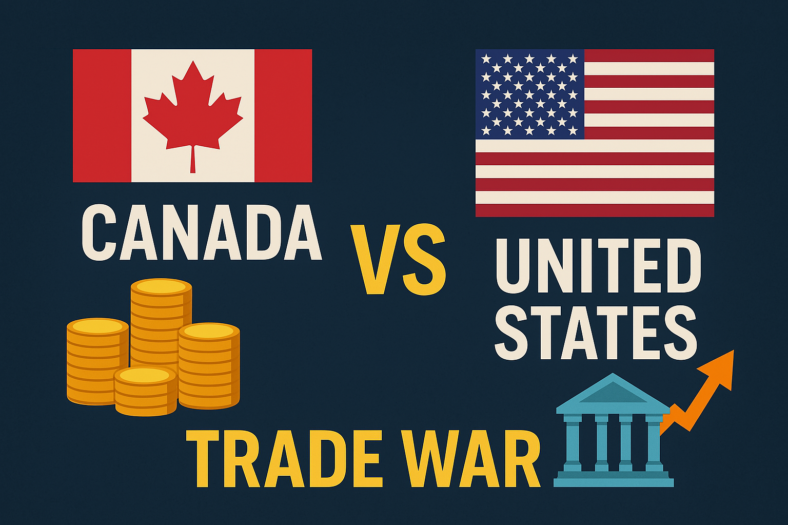When it comes to securing your financial future, finding the best Guaranteed Investment Certificate (GIC) rates in Canada is paramount. GICs offer a stable and secure investment option, making them a popular choice among investors seeking predictable returns. With a plethora of financial institutions and varying terms available, navigating the landscape of GIC rates can be daunting. However, armed with the right knowledge and insight, you can make informed decisions to maximize your returns while minimizing risk. In this comprehensive guide, we will delve into the intricacies of GICs, explore the factors influencing their rates, and provide you with a detailed analysis of the best GIC rates currently available in Canada. Whether you’re a seasoned investor or a novice looking to explore your options, this guide will serve as your roadmap to optimizing your investment portfolio with the best GIC rates in the Canadian market.
Best GIC Rates in Canada – Editor’s Picks
What are GICs?
Guaranteed Investment Certificates (GICs) are financial products offered by banks and credit unions in Canada. They are a type of investment where you deposit a certain amount of money with a financial institution for a fixed period of time, known as the term. In return, the institution guarantees to pay you back the initial amount, known as the principal, along with a predetermined amount of interest at the end of the term.
GICs are considered low-risk investments because they offer a guaranteed rate of return and the principal is protected. Unlike stocks or mutual funds, GICs do not fluctuate in value, making them an attractive option for investors who prioritize capital preservation and stability.
GICs come in various terms, ranging from a few months to several years, and the interest rates typically vary depending on the length of the term. Generally, longer-term GICs offer higher interest rates than shorter-term ones, reflecting the additional commitment made by the investor.
One of the key features of GICs is that they are insured by the Canada Deposit Insurance Corporation (CDIC) or provincial deposit insurance programs, providing an additional layer of security for investors. This insurance protects the principal and accrued interest up to a certain limit in case the financial institution fails.
Overall, GICs are a straightforward and reliable investment option for individuals seeking a steady return with minimal risk.
How do GICs work?
Guaranteed Investment Certificates (GICs) function as fixed-term investments where you, as the investor, deposit a specific amount of money with a financial institution for a predetermined period, known as the term. Here’s a detailed breakdown of how GICs work:
Initial Investment: You start by deciding how much money you want to invest in a GIC. This amount is called the principal.
Choosing a Term: Next, you select the term for your GIC. Terms can range from as short as a few months to several years. The term you choose will impact the interest rate offered by the financial institution. Generally, longer terms offer higher interest rates.
Interest Rate: The financial institution offers you a fixed interest rate for the chosen term. This rate is predetermined and does not change throughout the term of the GIC.
Deposit: Once you’ve decided on the principal amount and the term, you deposit the funds into the GIC account with the financial institution.
Accrual of Interest: Throughout the term of the GIC, interest accrues on the principal amount at the predetermined rate. The interest can be compounded, meaning it is added to the principal periodically, or paid out at the end of the term, depending on the type of GIC.
Maturity: At the end of the term, the GIC reaches maturity. At this point, you have the option to withdraw the principal along with the accrued interest, renew the GIC for another term, or transfer the funds to another investment vehicle.
Redemption: If you choose to redeem the GIC at maturity, the financial institution returns the principal amount along with the accrued interest to you. You may have the option to receive the funds as a lump sum or have them reinvested into another GIC or investment account.
Risk and Safety: GICs are considered low-risk investments because they offer a guaranteed rate of return and the principal is protected. They are typically insured by the Canada Deposit Insurance Corporation (CDIC) or provincial deposit insurance programs, providing additional security for investors in case the financial institution fails.
Overall, GICs provide a secure and predictable way to grow your savings over a fixed period, making them a popular choice for risk-averse investors or those looking to diversify their investment portfolio.
Pros and cons of GICs
here’s a detailed breakdown of the pros and cons of Guaranteed Investment Certificates (GICs):
Pros:
Safety and Security: GICs are considered one of the safest investment options available because they offer a guaranteed rate of return and the principal amount is protected. They are typically insured by the Canada Deposit Insurance Corporation (CDIC) or provincial deposit insurance programs, providing additional security for investors.
Stability: Unlike stocks or mutual funds, which can fluctuate in value, GICs provide a stable and predictable return. The interest rate is fixed for the duration of the term, offering investors certainty about their investment outcome.
Diversification: GICs can be a valuable component of a diversified investment portfolio. They provide a low-risk asset class that can help balance out higher-risk investments, such as stocks or real estate.
Flexibility: GICs come in various terms, ranging from a few months to several years, allowing investors to choose the term that best aligns with their financial goals and timeline. Some GICs also offer flexible redemption options, such as early withdrawal with a penalty or the ability to access interest payments.
Ease of Use: Investing in GICs is straightforward and accessible to most investors. They can be purchased through banks, credit unions, and other financial institutions, either online or in person.
Cons:
Low Returns: While GICs offer safety and stability, they typically provide lower returns compared to other investment options, such as stocks or mutual funds. The interest rates on GICs are often lower than the potential returns available in the stock market, making them less attractive for investors seeking higher yields.
Lack of Liquidity: GICs have a fixed term, meaning your money is locked in for a specific period. If you need to access your funds before the GIC matures, you may incur penalties or forfeit some of the interest earned.
Interest Rate Risk: When you invest in a GIC, you are exposed to interest rate risk. If interest rates rise after you’ve purchased a GIC, you may miss out on higher returns available in the market. Conversely, if interest rates fall, you may benefit from locking in a higher rate, but you may also be subject to opportunity costs if you’re unable to reinvest at a higher rate.
Inflation Risk: GICs may not keep pace with inflation, meaning the purchasing power of your returns may diminish over time. If inflation outpaces the interest earned on your GIC, your real rate of return could be negative.
Limited Upside Potential: Unlike stocks or other investments where the potential for capital appreciation is unlimited, GICs have a fixed rate of return determined at the outset. This limits the upside potential for investors, particularly during periods of economic growth or market expansion.
Overall, while GICs offer safety and stability, they may not provide the highest returns or the flexibility of other investment options. It’s essential to consider your investment goals, risk tolerance, and time horizon when evaluating whether GICs are the right choice for your portfolio.
Types of GICs available in Canada
In Canada, there are several types of Guaranteed Investment Certificates (GICs) available to investors, each offering different features and benefits. Here are the main types of GICs you can find:
Fixed-Term GICs: Fixed-term GICs are the most common type of GIC. With these GICs, you invest a certain amount of money for a specific period, known as the term, which can range from months to years. The interest rate is fixed for the duration of the term, providing investors with stability and predictability.
Redeemable GICs: Redeemable GICs, also known as cashable or redeemable at maturity GICs, offer investors the flexibility to withdraw their funds before the end of the term without incurring penalties. These GICs typically have lower interest rates compared to non-redeemable GICs to compensate for the added flexibility.
Non-Redeemable GICs: Non-redeemable GICs, also known as locked-in GICs, require investors to keep their funds invested for the entire term. Withdrawals before the maturity date are usually subject to penalties, such as forfeiting a portion of the interest earned. Non-redeemable GICs often offer higher interest rates compared to redeemable GICs due to the commitment required from investors.
Market-Linked GICs: Market-linked GICs, also known as equity-linked GICs or index-linked GICs, offer investors the opportunity to earn returns based on the performance of an underlying market index, such as the stock market or a specific stock index. These GICs typically have a predetermined term and offer a guaranteed minimum return, protecting the principal investment while allowing for potential upside linked to market performance.
Foreign Currency GICs: Foreign currency GICs allow investors to hold GICs denominated in currencies other than Canadian dollars. These GICs can be useful for investors looking to diversify their currency exposure or protect against currency fluctuations.
Registered GICs: Registered GICs are held within registered accounts, such as Registered Retirement Savings Plans (RRSPs), Tax-Free Savings Accounts (TFSAs), or Registered Education Savings Plans (RESPs). Investing in registered GICs can offer tax advantages, such as tax-deferred or tax-free growth, depending on the type of account.
Market-Linked GICs with Principal Protection: These GICs combine elements of market-linked GICs with principal protection. They offer investors the potential for higher returns linked to market performance while guaranteeing the return of the principal investment at maturity, regardless of market fluctuations.
These are the primary types of GICs available in Canada, each designed to meet the diverse needs and preferences of investors. It’s essential to carefully consider the features, terms, and risks associated with each type of GIC before making an investment decision.
How to find the best GIC rates in Canada
Finding the best Guaranteed Investment Certificate (GIC) rates in Canada requires thorough research and comparison of offers from various financial institutions. Here’s a detailed guide on how to find the best GIC rates:
Research Online: Start by researching GIC rates offered by different banks, credit unions, and financial institutions. Many financial websites and comparison tools allow you to compare GIC rates side by side, making it easier to identify competitive offers.
Check Bank Websites: Visit the websites of major banks and financial institutions in Canada to view their current GIC rates. Banks often display their GIC rates prominently on their websites, making it convenient for potential investors to compare options.
Use Comparison Websites: Utilize online comparison websites and financial aggregators that specialize in comparing GIC rates from multiple institutions. These platforms provide a comprehensive overview of available GIC rates, allowing you to quickly identify top offers.
Consult with Financial Advisors: If you have a financial advisor, consider consulting with them to discuss GIC options. Financial advisors can provide personalized recommendations based on your financial goals, risk tolerance, and investment timeline.
Review Promotional Offers: Keep an eye out for promotional offers and special deals from financial institutions. Some banks may offer promotional GIC rates for new customers or during specific time periods. However, be sure to read the terms and conditions carefully, as promotional rates may come with certain restrictions or limitations.
Consider Credit Unions: Don’t overlook credit unions when searching for the best GIC rates. Credit unions often offer competitive rates and may have more flexible terms compared to traditional banks. Check the websites of local credit unions or visit their branches to inquire about GIC options.
Compare Terms and Conditions: When comparing GIC rates, pay attention to the terms and conditions associated with each offer. Consider factors such as the term length, minimum investment amount, interest payment frequency, and early redemption penalties. Choose a GIC that aligns with your investment goals and financial needs.
Check for Insurance Coverage: Ensure that the financial institution offering the GIC is a member of the Canada Deposit Insurance Corporation (CDIC) or a provincial deposit insurance program. CDIC coverage protects eligible deposits up to a certain limit in case the institution fails, providing an additional layer of security for your investment.
Negotiate with Your Bank: In some cases, you may be able to negotiate GIC rates with your existing bank or financial institution, especially if you have a significant amount to invest. Contact your bank’s customer service or visit a branch to inquire about potential rate negotiations.
By following these steps and conducting thorough research, you can identify the best GIC rates in Canada that meet your investment objectives and provide a competitive return on your savings.
Fixed vs variable GIC rates
When considering Guaranteed Investment Certificates (GICs), investors often have the choice between fixed and variable interest rates. Let’s explore the differences between these two options:
Fixed GIC Rates:
Stability: Fixed GIC rates offer stability and predictability since the interest rate remains constant throughout the term of the investment. This provides investors with a clear understanding of the return they can expect.
Protection: With fixed rates, investors are shielded from fluctuations in the market or changes in interest rates. They lock in a specific rate at the time of purchase, regardless of external economic conditions.
Security: Fixed GIC rates appeal to risk-averse investors seeking capital preservation and steady income. They provide a safe and low-risk investment option, particularly for those with a shorter investment horizon.
Variable GIC Rates:
Potential for Higher Returns: Variable GIC rates have the potential to offer higher returns compared to fixed rates, especially if interest rates rise during the investment term. Investors may benefit from increases in market rates, leading to enhanced yield potential.
Flexibility: Variable GIC rates allow investors to capitalize on changes in interest rates, providing flexibility and adaptability to evolving market conditions. They can be an attractive option for investors seeking to maximize returns in a rising rate environment.
Market Exposure: Variable GIC rates are influenced by fluctuations in market interest rates, making them more sensitive to economic conditions and central bank policies. While this offers potential for higher returns, it also introduces greater volatility and risk compared to fixed rates.
Considerations for Investors:
Risk Tolerance: Investors should assess their risk tolerance and investment objectives when choosing between fixed and variable GIC rates. Fixed rates are suitable for conservative investors prioritizing stability, while variable rates may appeal to those comfortable with market fluctuations and seeking higher potential returns.
Economic Outlook: Consider the prevailing economic environment and interest rate forecasts when selecting GIC rates. Fixed rates may be preferable in a low or declining rate environment, while variable rates may be advantageous in anticipation of rising rates.
Diversification: Some investors may opt to diversify their GIC portfolio by allocating funds to both fixed and variable rates. This strategy balances stability with potential for growth, providing a diversified approach to income generation and risk management.
In conclusion, the choice between fixed and variable GIC rates depends on individual preferences, risk appetite, and market expectations. Both options offer distinct advantages and considerations, and investors should carefully evaluate their options to align with their financial goals and circumstances.
How long should I lock in a GIC for?
Determining the ideal term length for locking in a Guaranteed Investment Certificate (GIC) depends on several factors, including your financial goals, risk tolerance, liquidity needs, and interest rate outlook. Here are some considerations to help you decide how long to lock in a GIC for:
Investment Goals: Consider your investment objectives and timeline. If you have short-term financial goals, such as saving for a vacation or a down payment on a home, you may opt for a shorter-term GIC to match your investment horizon. For long-term goals, such as retirement planning or education funding, you may consider longer-term GICs to maximize returns and benefit from compounding interest.
Interest Rate Outlook: Assess the prevailing interest rate environment and economic forecasts. If interest rates are low and expected to remain stable or decline, locking in a longer-term GIC may provide a higher yield and protect against potential rate decreases. Conversely, if rates are expected to rise, opting for a shorter-term GIC allows you to take advantage of higher rates in the future.
Risk Tolerance: Consider your risk tolerance and comfort with market fluctuations. Longer-term GICs offer greater stability and predictability of returns, making them suitable for conservative investors who prioritize capital preservation. Shorter-term GICs may be more appropriate for investors willing to accept some degree of volatility in exchange for potential higher returns or flexibility.
Liquidity Needs: Evaluate your liquidity needs and financial flexibility. Longer-term GICs typically come with restrictions on early withdrawal or may incur penalties for accessing funds before maturity. If you anticipate needing access to your funds in the near future or want to maintain liquidity, opt for shorter-term GICs or redeemable options that allow for early withdrawal without penalties.
Diversification: Consider diversifying your GIC portfolio by investing in GICs with different term lengths. This strategy helps spread risk, provides flexibility for reinvestment or withdrawal, and allows you to take advantage of varying interest rate environments.
Ultimately, there is no one-size-fits-all answer to how long you should lock in a GIC for. It’s essential to assess your individual circumstances, goals, and risk tolerance to determine the most suitable term length for your GIC investments. Additionally, regularly review and adjust your investment strategy as needed to adapt to changing market conditions and financial objectives.
CDIC vs Provincial GIC insurance
The primary difference between the Canada Deposit Insurance Corporation (CDIC) and provincial deposit insurance programs lies in the scope of coverage and the institutions they protect. Here’s a breakdown of each:
CDIC (Canada Deposit Insurance Corporation):
Coverage: CDIC is a federal Crown corporation that provides deposit insurance for eligible deposits held at member institutions across Canada. CDIC covers deposits in Canadian dollars, including savings accounts, chequing accounts, term deposits (GICs), and foreign currency accounts, up to certain limits.
Coverage Limit: The coverage limit for CDIC insurance is $100,000 per insured category, per depositor, per member institution. Insured categories include deposits held in different ownership categories, such as single accounts, joint accounts, registered accounts (e.g., RRSPs, TFSAs), and trust accounts.
Member Institutions: CDIC insures deposits at member institutions, which include banks, trust companies, and loan companies that are federally regulated and CDIC members. Most of Canada’s largest financial institutions, including major banks, are members of CDIC.
Protection: CDIC protects deposits in the event of a member institution’s failure, up to the coverage limit, providing confidence and security for depositors. CDIC coverage is automatic and free for eligible deposits held at member institutions.
Provincial Deposit Insurance Programs:
Coverage: Provincial deposit insurance programs are administered by individual provinces and territories in Canada. Each province or territory has its own deposit insurance program, which provides coverage for deposits held at provincially regulated financial institutions within that jurisdiction.
Coverage Limit: The coverage limits and rules vary by province or territory and may differ from CDIC coverage. While most provincial programs offer coverage similar to CDIC, the specific limits and types of deposits covered may vary. It’s essential to check the rules of the provincial program where your deposits are held.
Member Institutions: Provincial deposit insurance programs cover deposits held at provincially regulated financial institutions, such as credit unions and caisses populaires, which are chartered and regulated at the provincial level.
Protection: Provincial deposit insurance programs provide protection for depositors in the event of a member institution’s failure, up to the coverage limit specified by the program. Like CDIC, provincial coverage offers peace of mind and security for depositors, ensuring that their funds are protected in case of insolvency.
In summary, while both CDIC and provincial deposit insurance programs aim to safeguard depositors’ funds, they differ in coverage limits, member institutions, and regulatory oversight. It’s essential for depositors to understand the coverage provided by each program and ensure that their deposits are adequately protected based on their financial institution and jurisdiction.
What is GIC laddering and how does it work?
GIC laddering is an investment strategy that involves spreading your GIC investments across multiple terms to maximize returns, maintain liquidity, and manage interest rate risk. Here’s how GIC laddering works:
Diversification of Terms: With GIC laddering, you divide your total investment amount into equal parts and invest each portion in GICs with different term lengths. For example, if you have $10,000 to invest, you could allocate $2,000 to GICs with terms of 1 year, 2 years, 3 years, 4 years, and 5 years.
Staggered Maturities: Each GIC matures at different intervals, creating a “ladder” of staggered maturities. As each GIC reaches its maturity date, you reinvest the proceeds into a new GIC with the longest term in the ladder, maintaining the ladder’s structure.
Renewal and Reinvestment: When a GIC matures, you have the option to renew it for another term or redeem the funds. If you choose to renew, you reinvest the principal and interest into a new GIC with the longest term in the ladder. This process continues as each GIC matures, allowing you to benefit from the prevailing interest rates at each renewal.
Benefits of GIC Laddering:
- Maximized Returns: GIC laddering allows you to benefit from higher interest rates offered by longer-term GICs while maintaining access to a portion of your funds at regular intervals.
- Liquidity: By staggering maturities, GIC laddering provides liquidity as a portion of your funds becomes available for reinvestment or withdrawal at frequent intervals, reducing the risk of tying up all your funds for an extended period.
- Mitigated Interest Rate Risk: With GIC laddering, you spread your investments across different terms, reducing the impact of interest rate fluctuations. If rates rise, you can reinvest maturing GICs at higher rates, while still benefiting from the longer-term rates of existing GICs.
Example:
- Suppose you have $10,000 to invest in GICs. You could create a ladder with the following allocation:
- $2,000 in a 1-year GIC
- $2,000 in a 2-year GIC
- $2,000 in a 3-year GIC
- $2,000 in a 4-year GIC
- $2,000 in a 5-year GIC
- As each GIC matures, you reinvest the proceeds into a new 5-year GIC, maintaining the ladder’s structure and benefiting from the higher rates available for longer-term investments.
- Suppose you have $10,000 to invest in GICs. You could create a ladder with the following allocation:
GIC laddering is a disciplined approach to investing in GICs, offering a balance between maximizing returns, maintaining liquidity, and managing interest rate risk. By diversifying across multiple terms, investors can build a resilient investment portfolio that adapts to changing market conditions and provides steady income over time.
How to open a GIC
Opening a Guaranteed Investment Certificate (GIC) in Canada is a straightforward process, typically requiring you to follow these steps:
Research Financial Institutions: Begin by researching banks, credit unions, and other financial institutions that offer GICs. Consider factors such as interest rates, terms, and minimum investment requirements to find the best option for your needs.
Choose the Type of GIC: Determine the type of GIC that best suits your investment goals. Consider factors such as the term length, whether you want a redeemable or non-redeemable GIC, and any additional features, such as market-linked or foreign currency options.
Gather Required Information: Before opening a GIC, you will need to provide certain information, including your identification details, contact information, and in some cases, your social insurance number (SIN). Make sure you have this information readily available.
Contact the Financial Institution: Once you’ve decided on a specific GIC and financial institution, contact them to initiate the opening process. You can typically do this by visiting a branch in person, calling their customer service department, or applying online through their website.
Complete Application Forms: The financial institution will provide you with the necessary application forms to open the GIC. Fill out the forms accurately and thoroughly, providing all requested information.
Choose Funding Source: Decide how you will fund your GIC. You can typically fund a GIC using cash from your bank account, a transfer from another investment account, or by depositing a physical cheque.
Submit Required Documents: Along with the application forms, you may need to submit additional documents, such as proof of identity and address. This is typically required for regulatory compliance and to verify your identity.
Review Terms and Conditions: Carefully review the terms and conditions of the GIC before finalizing your application. Pay attention to details such as the interest rate, term length, redemption options, and any applicable fees or penalties.
Confirm Opening Details: Once your application is processed, confirm the details of your GIC opening, including the principal amount, term length, and interest rate. Make sure everything is accurate and matches your expectations.
Receive Confirmation: After completing the GIC opening process, you will receive confirmation from the financial institution, usually in the form of a confirmation letter or email. This will include details of your GIC, such as the account number, maturity date, and interest payment schedule.
Fund the GIC: If you haven’t already funded the GIC, transfer the required funds to the account designated for your GIC investment. This may involve transferring funds from your bank account or another investment account.
Monitor Your GIC: Once your GIC is opened and funded, monitor its performance periodically. Keep track of interest payments, review statements, and stay informed about any changes to the terms or conditions of your GIC.
By following these steps, you can successfully open a Guaranteed Investment Certificate (GIC) in Canada and begin earning a secure and predictable return on your investment..
Common fees for GICs
While Guaranteed Investment Certificates (GICs) are generally considered low-cost investment options, there are some common fees and charges associated with them. These fees can vary depending on the financial institution and the specific terms of the GIC. Here are some common fees you may encounter when investing in GICs:
Early Redemption Penalty: Non-redeemable GICs typically have a fixed term, and withdrawing funds before the maturity date may result in an early redemption penalty. The penalty amount is often calculated as a percentage of the interest earned or a predetermined fee.
Transfer-Out Fee: Some financial institutions may charge a fee for transferring funds from a GIC to another investment account or financial institution before the maturity date. This fee is usually applied to non-redeemable GICs.
Administration Fees: Certain financial institutions may charge administration fees for managing GIC accounts. These fees may be assessed annually or on a per-transaction basis and can vary depending on the institution.
Foreign Exchange Fees: If you invest in a foreign currency GIC, you may incur foreign exchange fees when converting Canadian dollars to the currency of the GIC. These fees are typically charged as a percentage of the transaction amount.
Brokerage Fees: If you purchase a GIC through a brokerage platform or investment advisor, you may be subject to brokerage fees or commissions. These fees can vary depending on the brokerage firm and the specific terms of your investment agreement.
Interest Rate Differential: In some cases, early redemption of a GIC may result in an interest rate differential charge. This fee is calculated based on the difference between the contracted interest rate and the prevailing market rate at the time of redemption.
Account Inactivity Fees: If you hold a GIC within a registered account, such as an RRSP or TFSA, and the account remains inactive for an extended period, you may be charged an account inactivity fee. This fee is designed to encourage account holders to maintain active investment activity.
Renewal Fees: When a GIC reaches maturity, some financial institutions may charge a renewal fee if you choose to renew the GIC for another term. This fee is typically applied automatically unless you instruct otherwise.
It’s essential to carefully review the terms and conditions of any GIC investment to understand the fees and charges associated with it fully. Consider comparing GIC offerings from different financial institutions to find options with competitive rates and favorable fee structures. Additionally, consult with a financial advisor or representative from the financial institution if you have questions about specific fees or charges.
Requirements to get a GIC
To open a Guaranteed Investment Certificate (GIC) in Canada, you typically need to meet certain requirements set by the financial institution offering the GIC. While specific requirements may vary slightly from one institution to another, here are the common requirements to get a GIC:
Age: Most financial institutions require you to be of legal age to enter into a financial contract, which is usually 18 years or older. However, some institutions may offer GICs to minors with parental consent or through custodial accounts.
Identification: You will need to provide valid identification documents to open a GIC. Acceptable forms of identification may include a government-issued photo ID, such as a driver’s license or passport, along with additional documentation to verify your identity and address.
Funding: You will need to have the funds available to invest in the GIC. The minimum investment amount required to open a GIC varies depending on the financial institution and the type of GIC you choose. Some institutions may require a minimum deposit of a few hundred dollars, while others may have higher minimums.
Account Information: If you’re opening a GIC within an existing account at the financial institution, such as a chequing or savings account, you may need to provide account information to facilitate the transfer of funds.
Social Insurance Number (SIN): While not always mandatory, providing your Social Insurance Number (SIN) may be required for tax reporting purposes, particularly if you’re opening a registered GIC within a tax-advantaged account, such as an RRSP or TFSA.
Risk Assessment: Some financial institutions may conduct a risk assessment or suitability analysis to determine whether a GIC is an appropriate investment for you based on your financial situation, investment objectives, and risk tolerance.
Legal Capacity: You must have the legal capacity to enter into a financial contract, meaning you are not under any legal restrictions that would prevent you from making financial transactions, such as being under guardianship or power of attorney.
Residency Status: While Canadian citizenship is not always required to open a GIC, you typically need to be a resident of Canada with a Canadian address to open an account at a Canadian financial institution.
It’s essential to check the specific requirements of the financial institution where you plan to open a GIC and ensure that you meet all eligibility criteria before proceeding with the application. If you have any questions or concerns about the requirements, don’t hesitate to contact the financial institution’s customer service or visit a branch for assistance.
Alternatives to GICs
There are several alternatives to Guaranteed Investment Certificates (GICs) that investors can consider, each with its own features, benefits, and risk profiles. Here are some common alternatives to GICs:
High-Interest Savings Accounts (HISAs): High-interest savings accounts offer a safe and liquid way to earn a competitive interest rate on your savings. HISAs typically offer higher interest rates than traditional savings accounts and provide easy access to your funds without penalties. However, they may have lower interest rates compared to GICs and are subject to fluctuation.
Bonds: Bonds are debt securities issued by governments or corporations to raise capital. They offer fixed interest payments (coupons) over a predetermined period, with the principal amount returned at maturity. Bonds can provide a predictable income stream and are available in various forms, including government bonds, corporate bonds, and municipal bonds. However, they may be subject to interest rate risk and credit risk.
Stocks (Equities): Stocks represent ownership in a company and offer the potential for capital appreciation and dividends. Investing in stocks can provide higher returns compared to fixed-income investments like GICs but comes with greater volatility and risk. It’s essential to conduct thorough research and diversify your stock portfolio to manage risk effectively.
Mutual Funds: Mutual funds pool money from multiple investors to invest in a diversified portfolio of stocks, bonds, or other securities. They offer professional management and diversification, making them suitable for investors seeking exposure to various asset classes. Mutual funds come in different types, including equity funds, bond funds, balanced funds, and index funds, each with its own risk-return profile and investment strategy.
Exchange-Traded Funds (ETFs): ETFs are investment funds that trade on stock exchanges, similar to individual stocks. They offer diversification, flexibility, and low costs compared to mutual funds. ETFs track various indexes, sectors, or asset classes and can be an efficient way to gain exposure to specific market segments. However, like stocks, ETFs are subject to market volatility and may involve brokerage fees.
Real Estate Investment Trusts (REITs): REITs are companies that own, operate, or finance income-producing real estate properties. They offer investors exposure to the real estate market without the hassle of property management. REITs typically distribute a significant portion of their income to shareholders in the form of dividends. However, they are sensitive to changes in interest rates, property values, and economic conditions.
Certificate of Deposit (CD): Similar to GICs, CDs are time deposits offered by banks and credit unions with fixed terms and interest rates. CDs typically offer higher interest rates than regular savings accounts but may have penalties for early withdrawal. They are insured by the Federal Deposit Insurance Corporation (FDIC) or the National Credit Union Administration (NCUA) up to certain limits.
Money Market Funds: Money market funds invest in short-term, low-risk securities such as Treasury bills, commercial paper, and certificates of deposit. They offer stability, liquidity, and competitive yields compared to traditional savings accounts. Money market funds are regulated and typically provide a stable net asset value (NAV) of $1 per share.
These alternatives to GICs offer investors a range of options to meet their financial goals, risk tolerance, and investment preferences. It’s essential to evaluate each option carefully, considering factors such as return potential, liquidity, risk, and suitability for your investment objectives. Consulting with a financial advisor can help you make informed decisions and build a diversified investment portfolio tailored to your needs.
FAQs about the best GIC rates in Canada
In conclusion, navigating the landscape of GICs in Canada offers investors an array of opportunities to secure their financial future with stability and predictability. By exploring the best GIC rates available, investors can capitalize on competitive offers from various financial institutions, aligning their investment goals with the right mix of term lengths, interest rates, and redemption options. Whether seeking the safety of fixed-term GICs, the flexibility of redeemable options, or the potential for higher returns with market-linked GICs, there’s a suitable choice for every investor’s needs.
Moreover, understanding the factors influencing GIC rates, such as market conditions, economic indicators, and the financial health of institutions, empowers investors to make informed decisions and maximize their returns. Additionally, considering the tax implications and insurance coverage associated with GICs adds another layer of security and financial planning.
Ultimately, by conducting thorough research, comparing options, and consulting with financial advisors when needed, investors can confidently navigate the GIC landscape to find the best rates and build a diversified investment portfolio tailored to their financial objectives and risk tolerance. With the right approach, GICs remain a valuable tool for preserving capital, generating income, and achieving long-term financial success in Canada’s dynamic investment environment.




















